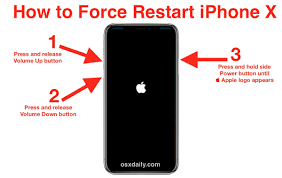Why Does Your iPhone Need a Hard Restart? Exploring Common Reasons and Solutions

In today’s fast-paced digital world, smartphones are our lifelines. Among the many options, the iPhone stands out for its sleek design and user-friendly interface. However, even the most advanced devices can run into issues. One of the common troubleshooting steps for resolving such problems is performing a hard restart. But why exactly might you need to hard restart your iPhone? Let’s explore some common scenarios where a hard restart can be beneficial and why it might be necessary.
1. Troubleshooting Connectivity Issues
One of the most frequent reasons people opt for a hard restart is because of connectivity problems. Whether it’s an issue with Wi-Fi, cellular data, or Bluetooth, a hard restart can often help resolve these problems. When your iPhone’s connection features aren’t functioning as expected, a hard restart resets the hardware and software components that manage these connections. This can help refresh network settings and resolve issues that a simple reboot might not fix.
2. Addressing Performance Sluggishness
If your iPhone is running slower than usual, a hard restart can help improve its performance. Over time, apps, background processes, and system caches can accumulate and affect the device’s speed. A hard restart clears temporary memory (RAM) and stops any processes that might be causing the slowdown. This can lead to a smoother, more responsive user experience.
3. Resolving App Crashes and Glitches
Apps may sometimes freeze, crash, or behave unpredictably. When this happens, a hard restart can be a quick fix. It can help clear temporary issues that might be affecting app performance. By restarting your iPhone, you close all open apps and clear any temporary data that might be causing conflicts, allowing the apps to function normally once the device boots back up.
4. Preparing to Sell or Give Away Your iPhone
Before selling or giving away your iPhone, it’s essential to ensure that all your personal data is securely erased. A hard restart is not sufficient for this purpose, but it’s often part of the process. To completely wipe your data, you should first perform a factory reset. However, performing a hard restart before initiating the factory reset can help ensure that the reset process runs smoothly by clearing any temporary issues that might interfere with it.
5. Resolving System Errors
Sometimes, your iPhone might encounter system errors or bugs that a standard restart can’t resolve. These issues could be due to software glitches, system conflicts, or other anomalies. In such cases, a hard restart can be a more forceful way to address these problems. It resets the device’s system and can help resolve errors that are not fixed by other means.
How to Perform a Hard Restart
Performing a hard restart on an iPhone varies slightly depending on the model you have. Here’s a general guide:
- iPhone 8 and Later: Press and quickly release the Volume Up button, then press and quickly release the Volume Down button. Finally, press and hold the Side button until the Apple logo appears.
- iPhone 7 and 7 Plus: Press and hold both the Volume Down button and the Sleep/Wake button until the Apple logo appears.
- iPhone 6s and Earlier: Press and hold both the Home button and the Sleep/Wake button until the Apple logo appears.
Conclusion
A hard restart is a versatile tool in your iPhone troubleshooting arsenal. It can help resolve a range of issues from connectivity problems and performance sluggishness to app crashes and system errors. While it’s not a cure-all for every issue, it’s a valuable step in addressing many common problems. Remember, if you’re preparing to sell or give away your iPhone, a hard restart is just the beginning—make sure to follow it up with a thorough data wipe to protect your personal information.





